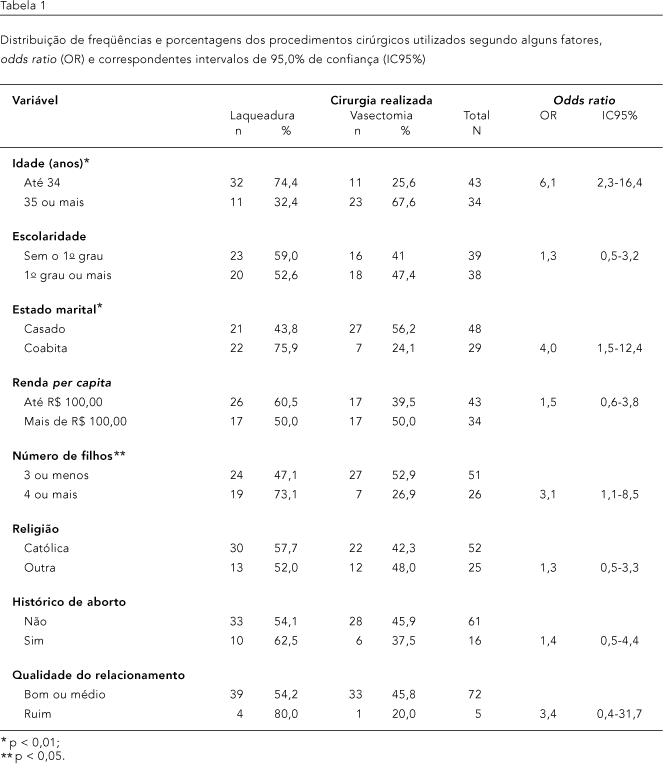In 1999 the Municipal Health Department in Ribeirão Preto, São Paulo, Brazil, implemented the provision of surgical contraceptive methods according to prevailing legal requirements. This study aimed to characterize the candidates for surgical sterilization and study the variables associated with the type of procedure. A total of 95 candidate patient records were studied, and statistical logistic regression analysis and Fisher's exact test were performed considering a significance level of ? = 0.05. Most candidates had stable partners, low schooling, and low income, were satisfied with their number of children, and had already tried to limit the number of children using reversible contraceptives. Mean age was 34.2 years, 45.3% underwent female sterilization, 35.8% underwent vasectomy, and 18.9% did not submit to any procedure. The odds of a man older than 35 having a vasectomy were 6.1 times that of a younger man (OR = 6.1; 95%CI: 2.4-16.4). More married men submitted to vasectomy than men who cohabited (OR = 4.0; 95%CI: 1.5-12.4). Women with four or more children were more likely to undergo sterilization than those with fewer children (OR = 3.1; 95%CI: 1.1-8.5).
Contraception; Reproductive Sterilization; Family Planning


